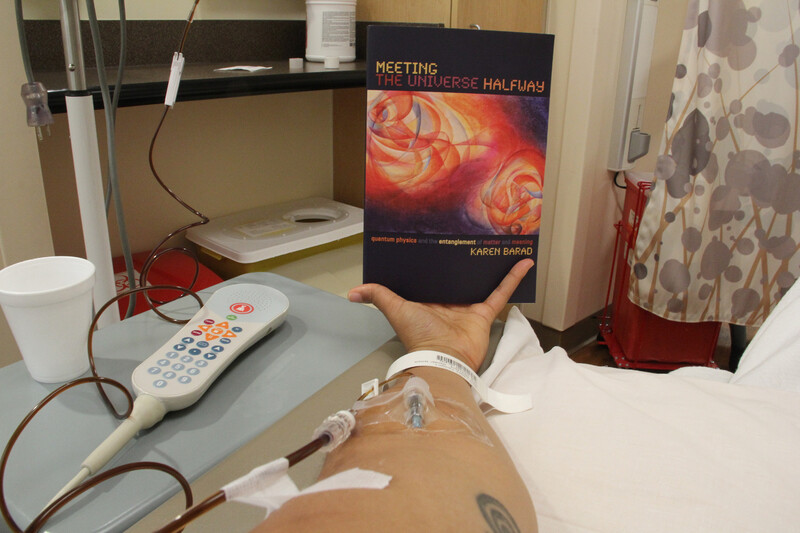
In 2015, Carolyn Lazard began documenting biweekly intravenous iron infusions for the treatment of their autoimmune disorders in selfies posted on their Instagram account, c_lion666, for a project they call In Sickness and Study.1 Each image in their site-specific installation on social media features their arm penetrated by a needle that connects a plastic tube filled with an infusion of iron to a machine out of their camera phone’s view. With their hand, they present the front cover of the book they are reading to their Instagram followers. Lazard brings the chronically ill body into public view with an acknowledgment that sick, disabled, and debilitated bodies are often kept out of sight by social and institutional codes that deem illness a private and personal matter, segregating them from the general public even when the disease or debility are non-communicable. Lazard’s project emphasises how the isolation of the sick body is a type of quarantining and containment. In the hospital setting, the plastic tubing that connects the interiority of Lazard’s body to the IV apparatus provides them with medicine, but also potentially blood, hydration, or liquid nourishment. The IV apparatus also complicates their movement, if not physically restraining their body—arguably already in a state of restricted mobility.
Lazard’s work points to both their dependency on and entanglement with the medical industry. Through the technological link to friends and outside communities on Instagram, they counter isolation by moving towards other relationships of dependency that allow them to endure and move through this entanglement. The IV extends outside of the frame of their photos into a virtual community of other disabled people with whom Lazard is in study, while the books they document and read provide access to other forms of contact. In Sickness and Study includes the books Lazard documents in their Instagram posts along with the information and resources they share with The Canaries, a network of women and gender non-conforming artists living with chronic illnesses, who meet in person and online to discuss their experiences navigating the medical-industrial complex; to consider its structural effects on women, femmes, and people of colour; and to support one another in self-advocacy, accessing resources, researching proposed treatments, and pursuing various forms of holistic healing. In Sickness and Study moves towards a speculative interdependence that allows Lazard to perform actions outside the physical boundaries of their own location. Lazard enacts a means of mobility from a position of restricted movement.
For the Collective Welfare circuit, the Blackwood commissioned three new images in Lazard’s In Sickness and Study series. The books featured in these photographs are Karen Barad’s Meeting the Universe Halfway: Quantum Physics and the Entanglement of Matter and Meaning (2007), Ursula K. Le Guin’s The Dispossessed: An Ambiguous Utopia (1974), and Stefano Harney and Fred Moten’s The Undercommons: Fugitive Planning & Black Study (2013). In addition to being featured in this publication, these three works will circulate via Lazard’s Instagram account and will appear on the Blackwood Gallery’s billboard-sized lightbox on the exterior of the William Davis Building on the University of Toronto Mississauga campus.
In Sickness and Study
Part of the exhibition Take Care, Circuit 5: Collective Welfare, February 12 – March 11, 2018.
Curated by Letters & Handshakes
Installation Views
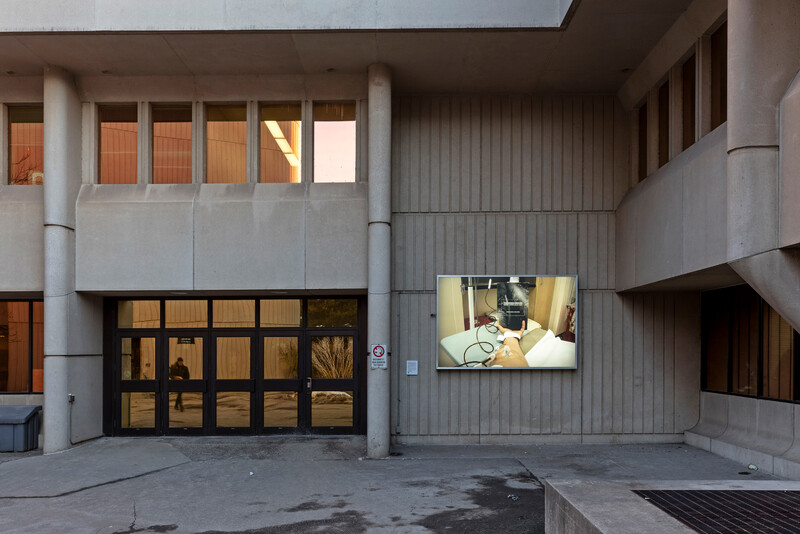
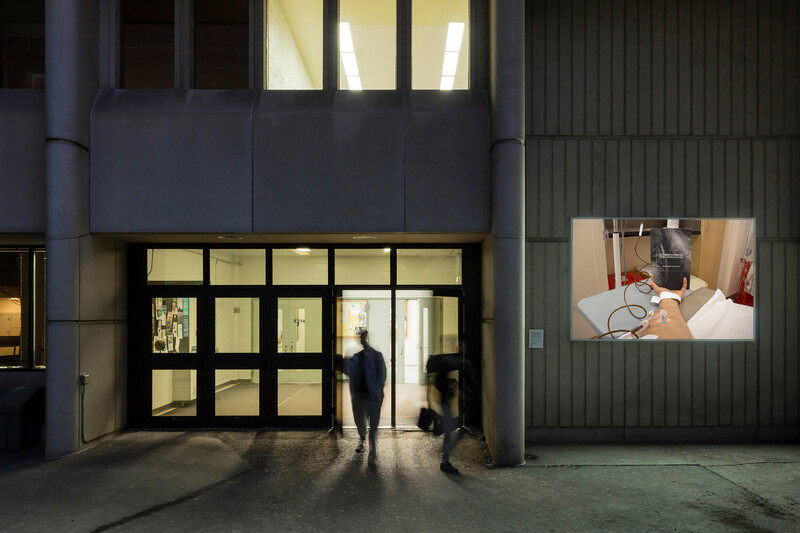
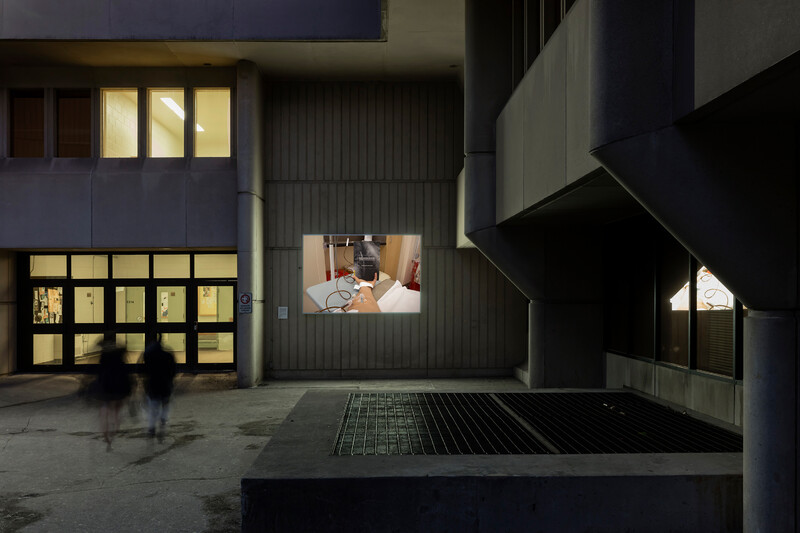
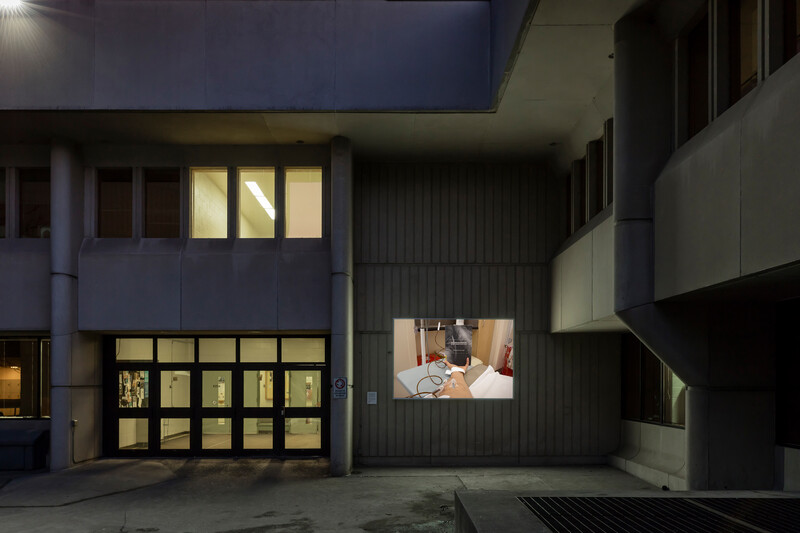
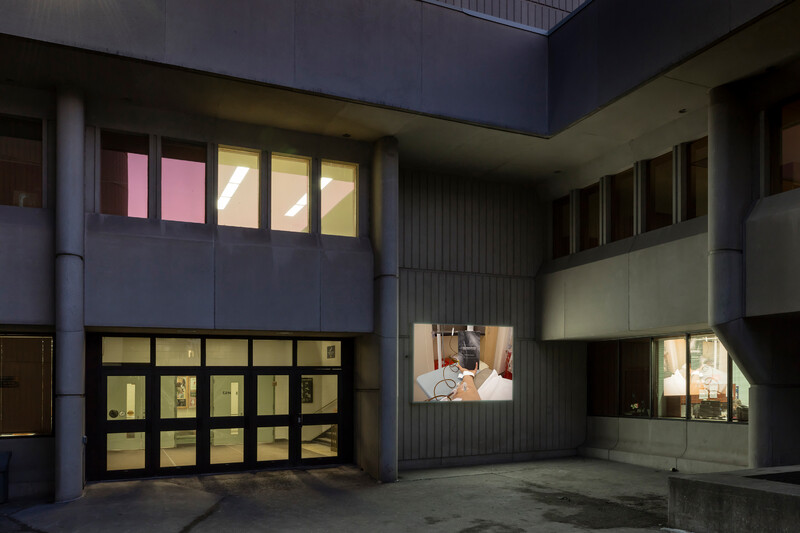
- Artist
- Carolyn Lazard

The Blackwood
University of Toronto Mississauga
3359 Mississauga Road
Mississauga, ON L5L 1C6
[email protected]
(905) 828-3789
The galleries are currently closed.
Facebook | Twitter | Instagram
Sign up to receive our newsletter.
The Blackwood is situated on the Territory of the Mississaugas of the Credit, Seneca, and Huron-Wendat.